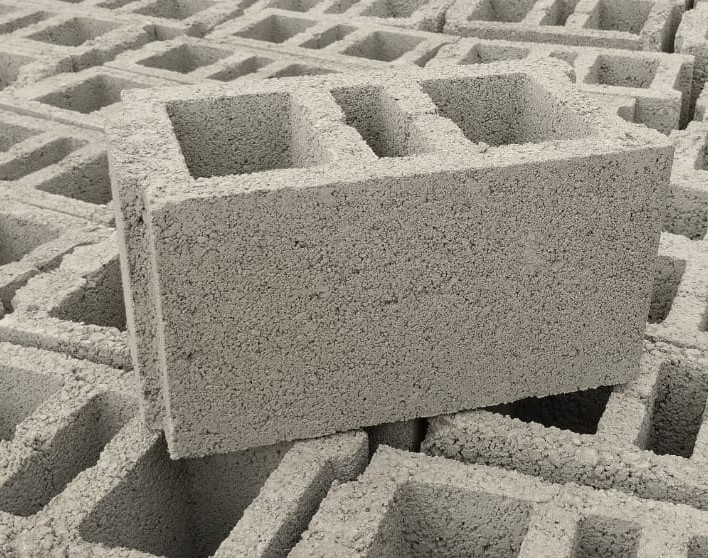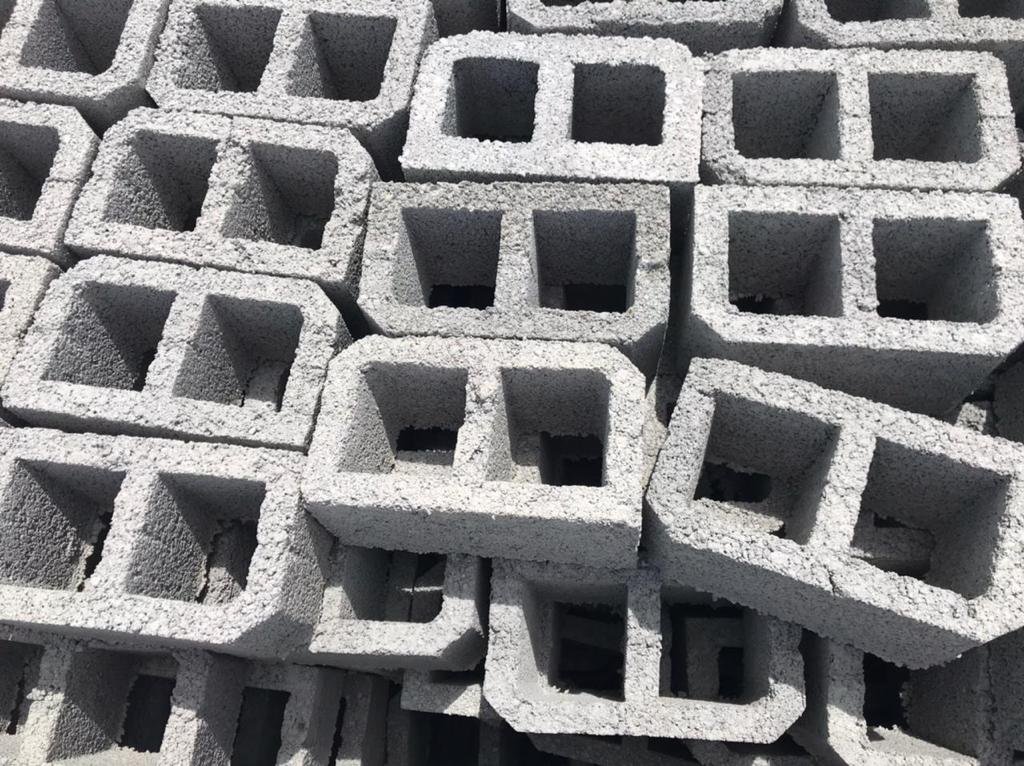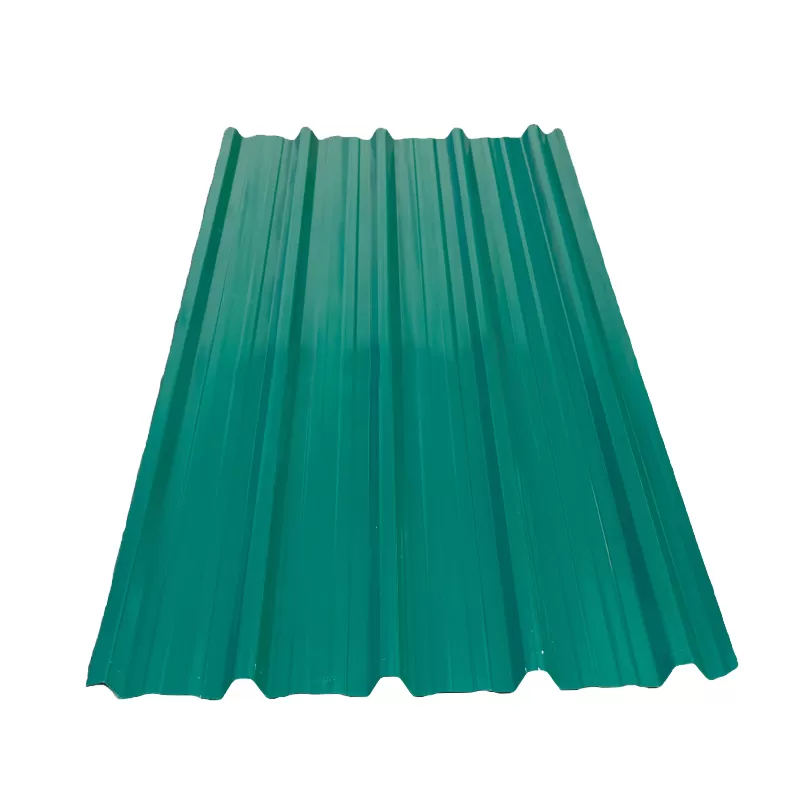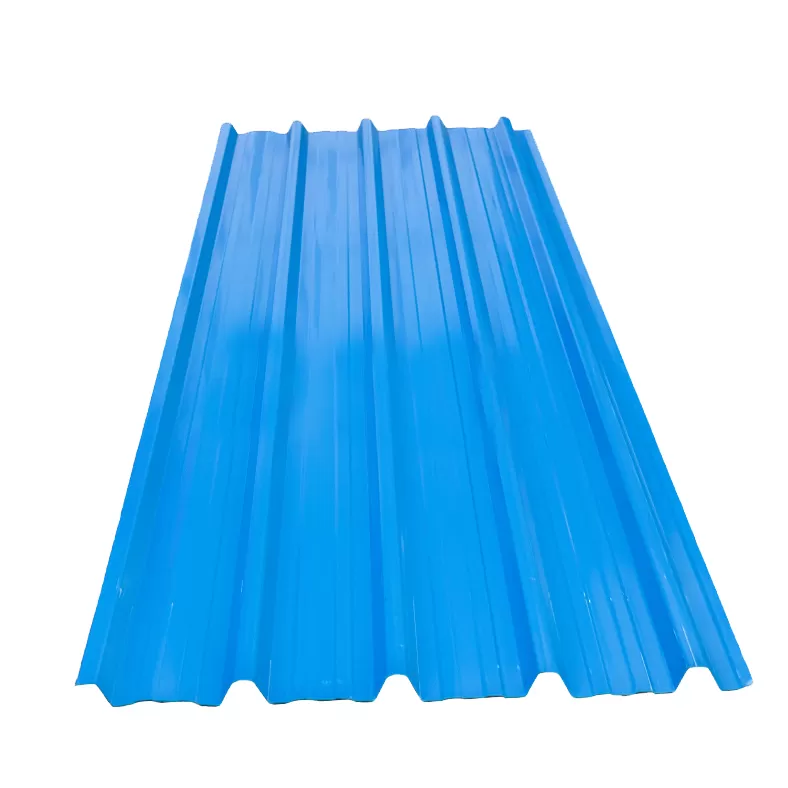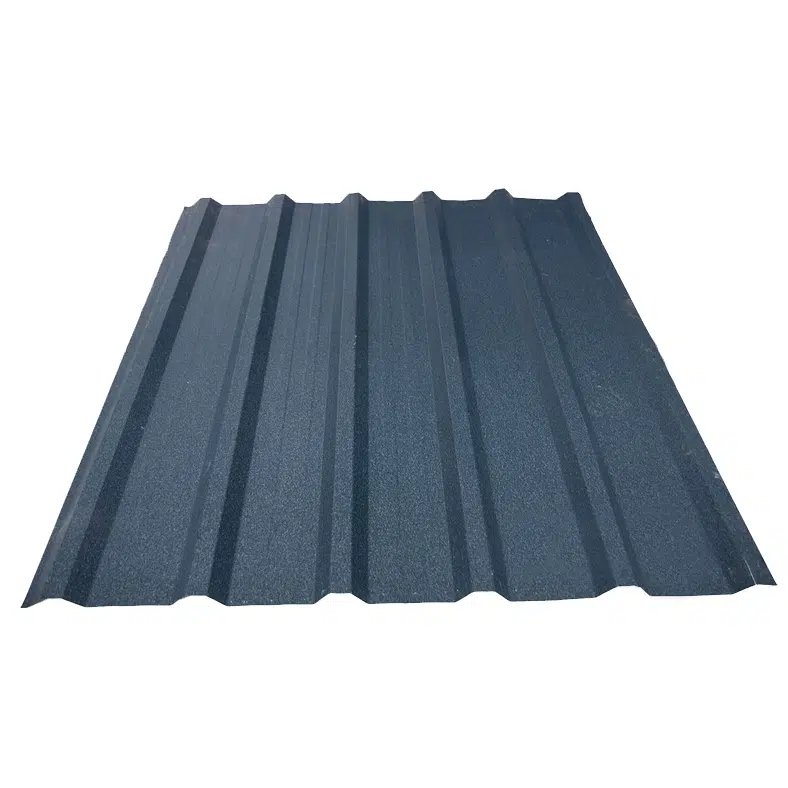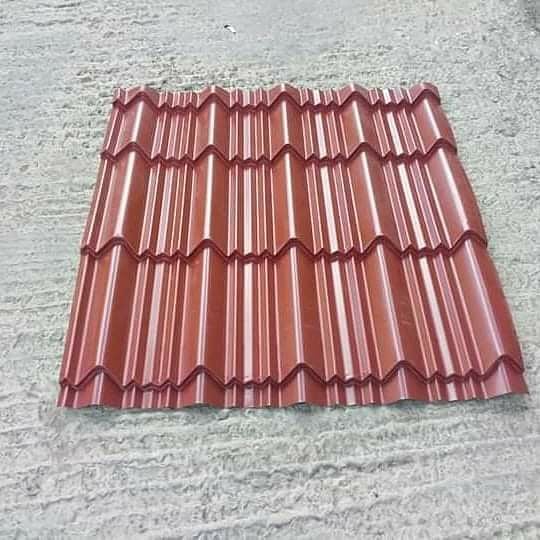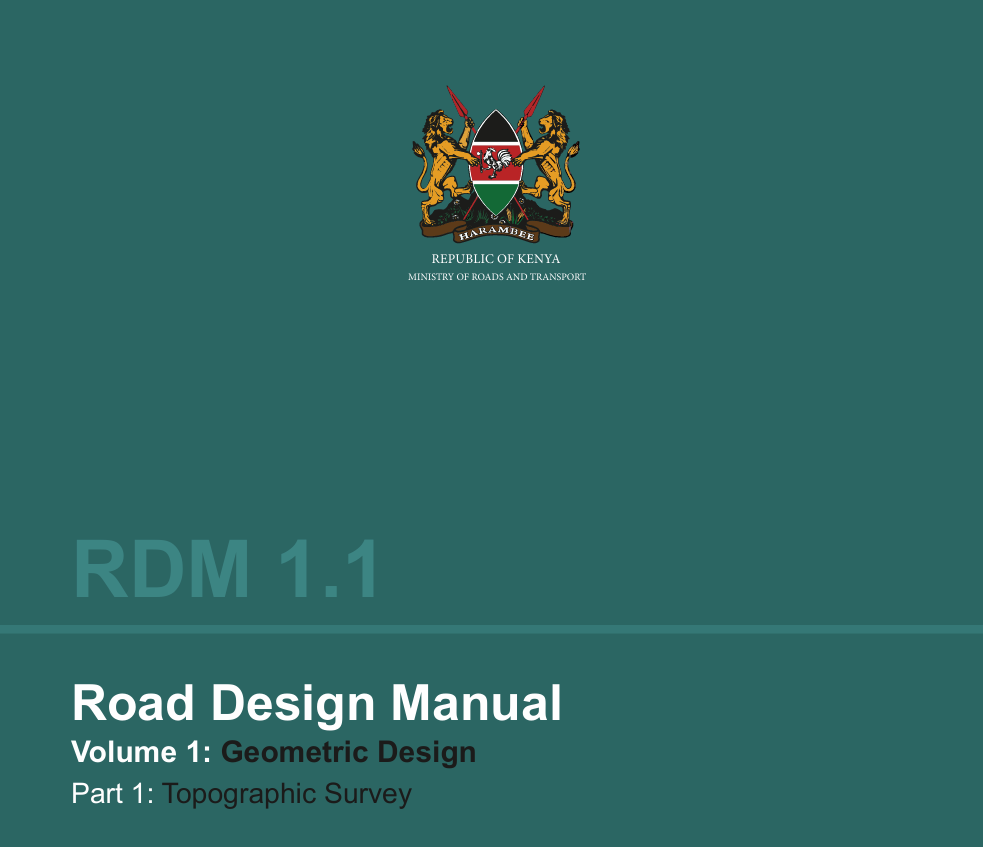Eurocode 7: Principles and Practices in Geotechnical Design (PDF)
Understanding Eurocode 7: Principles and Practices in Geotechnical Design
This article explores Eurocode 7’s fundamental principles, explaining how Kenya’s transition from British Standards impacts construction professionals. It covers the two-part structure of EN 1997, limit state design philosophy, and practical design approaches for foundations and geotechnical structures.
Eurocode 7 represents a fundamental shift in how geotechnical structures are designed across the globe. Think about the last building collapse you heard about in Nairobi. Poor foundation design? Inadequate soil investigation? These disasters often trace back to weak design standards. For Kenya's construction industry, the adoption of Eurocode 7 isn't just a regulatory change—it's a necessary evolution toward safer, more reliable infrastructure.
This standard, officially known as EN 1997, provides comprehensive guidelines for designing foundations, retaining walls, slopes, and other geotechnical structures. The European Committee for Standardization (CEN) approved it on June 12, 2006, and it became mandatory in EU member states in March 2010. Now, Kenya joins dozens of countries worldwide embracing this technically superior approach to geotechnical design.
Why should Kenyan engineers, students, and construction professionals care? Because the year 2021 saw Kenya's construction industry beginning to adopt these European standards, replacing British Standards (BS) that have been in use since 1969. Whether you're a structural engineer designing a high-rise in Westlands or a civil engineering student at Jomo Kenyatta University of Agriculture and Technology, understanding Eurocode 7 is no longer optional—it's essential.
What is Eurocode 7: Geotechnical Design?
Eurocode 7 consists of two distinct but interconnected parts that work together to ensure safe geotechnical design. Part 1, titled "General rules," and Part 2, focused on "Ground investigation and testing," were both published as European Standards. These documents don't work in isolation. They integrate seamlessly with EN 1990, which establishes the overarching principles for structural safety and serviceability across all Eurocodes.
The standard describes how to design geotechnical structures using the limit state design philosophy. This philosophy represents a significant departure from older design methods. Instead of applying a single global safety factor, limit state design uses multiple partial safety factors applied to different aspects of the design—actions, materials, and resistances. This approach provides more refined control over safety margins.
The scope of Eurocode 7 is broad and comprehensive. It applies to geotechnical aspects of the design of buildings and civil engineering works, addressing requirements for strength, stability, serviceability, and durability of structures. From the foundations of a residential house in Kiambu to the deep piles supporting the Nairobi Expressway, Eurocode 7 sets the rules.
The Kenya Bureau of Standards (KEBS), located on Popo Road off Mombasa Road in Nairobi, spearheads the adoption process in Kenya. Their role extends beyond just publishing standards—they provide training, accreditation for testing laboratories, and ongoing support for the construction industry. In 2022, the implementation of Eurocodes was expected to be approved by parliament followed by incorporation into national legislation.
Related Question: What exactly does EN 1997 cover?
EN 1997 addresses virtually every aspect of geotechnical design you'll encounter. It covers spread foundations, pile foundations, anchors, retaining structures, hydraulic failure mechanisms, embankments, and slope stability. The standard also provides guidance on ground investigation planning, execution, and interpretation of test results.
Why Does Eurocode 7 Matter for Kenyan Engineers?
The shift from British Standards to Eurocodes represents more than bureaucratic paperwork. It's about transforming Kenya's construction industry to meet international benchmarks. According to KEBS, come 2021, any product that does not conform to Eurocodes will not be allowed into the country. That's a game-changer for manufacturers, contractors, and design professionals.
Breaking Trade Barriers
Eurocodes once adopted are set to eliminate disparities that hinder transfer of engineering technology and services within Kenya and global markets. For Kenyan engineering firms looking to expand regionally—perhaps bidding on projects in Tanzania, Uganda, or Rwanda—Eurocode compliance opens doors. Many African countries, including South Africa, Ethiopia, and Morocco, have already begun adopting these standards.
The National Construction Authority (NCA), headquartered in Nairobi, works closely with KEBS to ensure that construction professionals understand and implement these changes. The authority has updated its registration and licensing requirements to reflect Eurocode compliance.
Promoting Structural Safety
The standards are expected to promote uniformity in levels of safety in the construction sector. Consider the recurring problem of building collapses in Nairobi and other urban centers. Many of these failures result from inadequate foundation design, poor soil investigation, or non-existent quality control. Eurocode 7 addresses these issues systematically.
The standard mandates thorough geotechnical investigations before design begins. It requires engineers to explicitly consider multiple failure modes and verify that structures remain safe under both normal and exceptional loading conditions. This rigorous approach reduces the likelihood of catastrophic failures.
Aligning with Vision 2030
With only a few years left to the Vision 2030 deadline, fast-tracking deployment of robust and high-quality infrastructure facilities is fundamental to transforming Kenya into a middle-level economy. The government's ambitious infrastructure agenda—new highways, railways, affordable housing, and industrial parks—demands design standards that can support rapid, safe development.
Eurocode 7 facilitates this transformation by providing clear, consistent design rules. Whether you're working on the Lamu Port-South Sudan-Ethiopia-Transport (LAPSSET) corridor or designing foundations for affordable housing units in Mavoko, the same rigorous principles apply.
Related Question: When exactly did Kenya begin implementing Eurocodes?
It is expected that by January 2021 the process of implementation of Structural Eurocodes will have been completed for their use in the construction industry. The transition involved extensive stakeholder engagement. Two 3-day sensitization workshops were organized by KEBS, with the first workshop successfully held in Mombasa in May 2016. These workshops, facilitated by experts from Belgium and the Netherlands, targeted technical personnel in government ministries, institutions of higher learning, professional bodies, and construction companies.
The Two Parts of Eurocode 7 Explained
Understanding the structure of Eurocode 7 is crucial for effective application. The two parts serve different but complementary functions in the design process.
Part 1: General Rules (EN 1997-1)
EN 1997-1 establishes the basis of geotechnical design, including design requirements, geotechnical design by calculation, design by prescriptive measures, load tests, the observational method, and geotechnical design reports. This part contains the core design principles you'll apply daily.
The document is organized into sections covering:
Basis of Geotechnical Design: This foundational section establishes the overall design philosophy. It introduces the concept of geotechnical categories (1, 2, and 3), which determine the complexity of design and investigation required. A simple residential house might fall into Category 1, while a 30-story building in Nairobi's Central Business District would be Category 3.
Actions and Design Situations: Eurocode 7 distinguishes between different types of loads (permanent, variable, accidental) and design situations (persistent, transient, accidental, seismic). This classification ensures engineers consider all relevant loading scenarios.
Ultimate and Serviceability Limit States: The standard provides detailed procedures for verifying both types of limit states. Ultimate limit state design addresses bearing resistance, sliding resistance, and overall stability, while serviceability limit state design focuses on settlements and displacements.
Spread Foundations: The standard covers actions and design situations, design and construction considerations, ultimate limit state design, serviceability limit state design, and structural design of spread foundations. Whether you're designing pad footings for a small structure or a raft foundation for a large building, this section provides the methodology.
Pile Foundations: Coverage includes pile load tests, axially loaded piles, transversely loaded piles, and structural design of piles. For projects in Nairobi's soft clay soils or Mombasa's coral formations, proper pile design according to Eurocode 7 is critical.
Part 2: Ground Investigation and Testing (EN 1997-2)
EN 1997-2 is intended to be used in conjunction with EN 1997-1 and provides rules supplementary to EN 1997-1 related to planning and reporting of ground investigations, general requirements for commonly used laboratory and field tests, interpretation and evaluation of test results, and derivation of values of geotechnical parameters.
This part is particularly important for geotechnical engineers and soil investigation firms. Kenya has several accredited materials testing laboratories that must align their procedures with EN 1997-2 requirements.
The document covers:
Planning Ground Investigations: The sequence of ground investigations includes preliminary investigations, design investigations with both field investigations and laboratory tests, and controlling and monitoring. This systematic approach ensures no critical information is overlooked.
Soil and Rock Sampling: Proper sampling techniques are essential for obtaining representative samples. The standard specifies methods for disturbed and undisturbed sampling, groundwater measurements, and sample handling.
Field Testing Methods: The standard covers dynamic probing tests (DP), weight sounding tests (WST), and various in-situ testing methods. For projects in Kenya, the Standard Penetration Test (SPT) remains the most commonly used field test. Understanding how to interpret SPT results according to Eurocode 7 is fundamental.
Laboratory Testing: Requirements include consistency limits determination, determination of density index of granular soil, soil dispersibility determination, frost susceptibility, and chemical testing of soil and groundwater. While frost susceptibility may not be relevant for most Kenyan projects, chemical testing is crucial for identifying aggressive ground conditions.
Related Question: How do Part 1 and Part 2 work together?
Part 2 provides the input data that Part 1 needs for design. You can't properly apply the design rules in Part 1 without first conducting investigations and tests according to Part 2. The relationship is sequential and interdependent. First, you plan and execute ground investigations per Part 2. Then, you use the derived geotechnical parameters to perform designs per Part 1.
Understanding Limit State Design Philosophy
Limit state design (LSD) represents a paradigm shift from traditional design methods. Limit state design requires the structure to satisfy two principal criteria: the ultimate limit state (ULS) and the serviceability limit state (SLS). But what does this actually mean in practice?
A limit state is a condition beyond which a structure no longer fulfills its design requirements. Think of it as a threshold that must not be crossed. Ultimate limit states are concerned with the safety of people and the structure, including loss of equilibrium, excessive deformation, rupture, loss of stability, and transformation into a mechanism.
Ultimate Limit States (ULS)
For a foundation, ULS might involve:
- Bearing capacity failure: The soil beneath a footing cannot support the applied load, leading to sudden collapse
- Sliding failure: A retaining wall slides horizontally due to insufficient resistance
- Overturning: A tall structure tips over due to inadequate moment resistance
- Overall stability failure: A slope or embankment fails along a deep-seated slip surface
Engineers verify these limit states using partial safety factors applied to loads (actions) and material properties (resistances). Design approaches vary for different combinations of groups of partial coefficients for actions, material strength, and overall strength of the system. This provides a more nuanced and reliable safety assessment than single-factor methods.
Serviceability Limit States (SLS)
Serviceability limit states are concerned with the functioning of the structure under normal use, the comfort of people, and the appearance of the construction works. These limit states don't involve collapse, but they still matter significantly.
For geotechnical structures, SLS typically involves:
- Excessive settlement: A foundation settles more than tolerable limits, causing cracks in walls or structural damage
- Differential settlement: Uneven settlement between different parts of a structure, leading to distortion
- Lateral displacement: Horizontal movement that affects adjacent structures or services
- Vibrations: Excessive vibrations affecting building occupants or sensitive equipment
For foundations of buildings, serviceability limit states typically require angular distortion βmax approximately equal to 1/500, while ultimate limit states allow βmax approximately equal to 1/150. These numerical limits guide designers in determining acceptable settlement criteria.
Related Question: Why did Eurocodes adopt limit state design instead of permissible stress design?
Limit state design has replaced the older concept of permissible stress design in most forms of civil engineering. The primary reason is improved reliability and efficiency. Permissible stress design applies a single global factor of safety to all design aspects. This approach is overly conservative in some situations and inadequate in others.
Limit state design allows engineers to calibrate safety levels for different failure modes. It explicitly accounts for variability in loads and material properties. The result is structures that are both safer and more economical. By considering both ultimate and serviceability limit states, Eurocode 7 enhances the safety and reliability of geotechnical structures while leading to improved efficiency and cost-effectiveness.
Design Approaches in Eurocode 7
One of the most discussed aspects of Eurocode 7 is its three design approaches (DA1, DA2, DA3). The evaluation of questionnaires dealing with which of the three design approaches has been selected for verification of geotechnical ultimate limit states in various European countries shows great potential for harmonization. Different countries have adopted different approaches through their National Annexes.
Design Approach 1 (DA1)
In this approach, partial factors are applied to actions or the effects of actions from the structure and to ground strength parameters. DA1 involves two combinations:
- Combination 1: Applies factors greater than 1.0 to actions (loads) while using unity factors for material properties. This checks for unfavorable load variations.
- Combination 2: Applies factors greater than 1.0 to material properties while using smaller factors for actions. This checks for unfavorable ground property variations.
The UK and Portugal primarily use DA1. It's particularly suitable for spread foundations and requires checking both combinations and using the more critical result.
Design Approach 2 (DA2)
DA2 applies partial factors to actions and resistances. For the verification of structural and geotechnical limit states in persistent and transient situations, Design Approach 2 is the recommended one. Most European countries, including Germany, Italy, and Slovakia, use DA2 for bearing capacity calculations.
This approach is straightforward and intuitive. You increase loads and decrease resistances, much like traditional design methods but with more refined factors.
Design Approach 3 (DA3)
Design Approach 3 may be used for verification of general stability of a site, overall stability of embedded walls, reinforced earth structures, structures reinforced by soil nails, and numerical analyses of soil-structure interaction. The Netherlands and several other countries favor DA3 for slope stability calculations.
DA3 applies factors to actions from the structure but not from the ground. Material factors are applied to ground strength parameters. This approach works well for structures where ground loads predominate.
Related Question: Which design approach should Kenyan engineers use?
Kenya's National Annex, being developed by KEBS, will specify which design approach(es) to adopt. Until finalized, engineers should consult the default recommendations in EN 1997-1 and seek guidance from KEBS. Many expect Kenya to adopt DA2 for its simplicity and widespread international use, though this remains to be confirmed.
Understanding all three approaches provides flexibility when working on international projects or collaborating with foreign consultants. The differences between approaches are significant but not insurmountable. The standardized design procedures and methodologies streamline the design process, and Eurocode 7 provides flexibility in design approaches, allowing engineers to adapt solutions to specific project requirements.

Buy From Us Today
Hollow Concrete Blocks (380 by 150 by 200)
KSh 65.00
Premium hollow concrete blocks, engineered for superior strength and durability. Their exceptional quality ensures reliable performance for any construction project.
- Dimensions: 380mm (L) x 150mm (W) x 200mm (H)
- Lightweight: Easy to handle at just 8.4 kg per unit
- Coverage: Requires only 11.5 blocks per square meter
Ideal for efficient, high-quality wall construction.
WE OFFER FREE DELIVERY WITHIN NAIROBI
Hollow Concrete Blocks (380 by 190 by 100)
KSh 60.00
Premium hollow concrete blocks, engineered for superior strength and durability. Their exceptional quality ensures reliable performance for any construction project.
- Dimensions: 380mm (L) x 190mm (W) x 100mm (H)
- Lightweight: Easy to handle at just 6 kg per unit
- Coverage: Requires only 12 blocks per square meter
Ideal for efficient, high-quality wall construction.
WE OFFER FREE DELIVERY WITHIN NAIROBI
Hollow Concrete Blocks (380 by 200 by 200)
KSh 75.00
Premium hollow concrete blocks, engineered for superior strength and durability. Their exceptional quality ensures reliable performance for any construction project.
- Dimensions: 380mm (L) x 200mm (W) x 200mm (H)
- Lightweight: Easy to handle at just 9.4 kg per unit
- Coverage: Requires only 11.5 blocks per square meter
Ideal for efficient, high-quality wall construction.
WE OFFER FREE DELIVERY WITHIN NAIROBI
Hollow Pots (380 by 200 by 160)
KSh 70.00
Hollow Pots
Premium hollow pots, engineered for superior strength and durability. Their exceptional quality ensures reliable performance for any slab construction project. - Dimensions: 380mm (L) x 200mm (W) x 160mm (H) - Lightweight: Easy to handle at just 9.5 kg per unit - Coverage: Requires only 14 blocks per square meter Ideal for efficient, high-quality slab construction.WE OFFER FREE DELIVERY WITHIN NAIROBI
Hollow Pots (380 by 200 by 200)
KSh 85.00
Hollow Pots
Premium hollow pots, engineered for superior strength and durability. Their exceptional quality ensures reliable performance for any slab construction project. - Dimensions: 380mm (L) x 200mm (W) x 200mm (H) - Lightweight: Easy to handle at just 9.8 kg per unit - Coverage: Requires only 14 blocks per square meter Ideal for efficient, high-quality slab construction.WE OFFER FREE DELIVERY WITHIN NAIROBI
Hollow Pots (380 by 200 by 230)
KSh 90.00
Hollow Pots
Premium hollow pots, engineered for superior strength and durability. Their exceptional quality ensures reliable performance for any slab construction project. - Dimensions: 380mm (L) x 200mm (W) x 230mm (H) - Lightweight: Easy to handle at just 10 kg per unit - Coverage: Requires only 14 blocks per square meter Ideal for efficient, high-quality slab construction.WE OFFER FREE DELIVERY WITHIN NAIROBI
Hollow Pots (380 by 200 by 300)
KSh 115.00
Hollow Pots
Premium hollow pots, engineered for superior strength and durability. Their exceptional quality ensures reliable performance for any slab construction project. - Dimensions: 380mm (L) x 200mm (W) x 300mm (H) - Lightweight: Easy to handle at just 13 kg per unit - Coverage: Requires only 14 blocks per square meter Ideal for efficient, high-quality slab construction.WE OFFER FREE DELIVERY WITHIN NAIROBI
Ground Investigation Requirements
You can’t design what you don’t understand. That’s the core principle behind Eurocode 7’s emphasis on thorough ground investigation. The standard recognizes that soil and rock properties vary significantly from site to site, and sometimes even within the same plot. A systematic approach to investigating subsurface conditions is non-negotiable.
EN 1997-2 classifies ground investigations into distinct phases. The desk study comes first—analyzing existing geological maps, aerial photographs, previous site investigation reports, and local knowledge. For a project in Nairobi’s Upperhill district, you’d review records of nearby developments, check geological surveys from the Kenya Geological Survey Department, and consult existing borehole logs.
Next comes the preliminary investigation, establishing broad ground conditions and identifying potential problems. This phase might involve walk-over surveys, trial pits, and limited boreholes. The goal is reconnaissance—getting a general picture before committing resources to detailed investigations.
The design investigation represents the main data collection phase. Field investigations combined with laboratory testing provide the geotechnical parameters needed for design calculations. This phase must occur before finalizing designs, though sometimes it happens in stages for large projects.
Finally, controlling and monitoring continues during construction and even after completion. Instrumentation tracks settlements, pore pressures, lateral movements, and structural responses. For major infrastructure projects like the Nairobi Expressway, continuous monitoring ensures the structure performs as predicted.
Geotechnical Categories
Eurocode 7 introduces three geotechnical categories that determine investigation depth and design complexity:
Geotechnical Category 1 covers small and simple structures where ground conditions are known from comparable experience. A single-story residential house on good ground might fall here. Quantitative geotechnical calculations aren’t mandatory—prescriptive measures based on local experience suffice.
Geotechnical Category 2 includes conventional structures with no exceptional risks or difficult ground conditions. Most buildings, bridges, and retaining walls fit this category. Standard procedures apply, with calculations required for both ultimate and serviceability limit states.
Geotechnical Category 3 addresses large or unusual structures, very difficult ground conditions, or sites in highly seismic or sensitive areas. High-rise buildings in Nairobi, major bridges, or structures on problematic soils like expansive black cotton soil require Category 3 treatment. More sophisticated analyses, including finite element modeling, may be necessary.
Related Question: How deep should geotechnical investigations go?
Investigation depth depends on the zone of influence—the volume of ground affected by the structure. For spread foundations, investigations typically extend 1.5 to 2 times the width of the foundation below the foundation level. Pile foundations require investigations to at least 5 meters below the anticipated pile toe level. If compressible layers exist deeper, investigations must go deeper. The standard mandates identifying all strata that could significantly affect the structure’s behavior.
Common Geotechnical Tests in Eurocode 7
Eurocode 7 Part 2 specifies numerous field and laboratory tests. Understanding these tests is essential for any geotechnical engineer or construction professional in Kenya.
Field Testing Methods
Standard Penetration Test (SPT) remains the workhorse of geotechnical investigations in Kenya. The test involves driving a split-spoon sampler 450mm into the ground using a 63.5kg hammer falling 760mm. The number of blows (N-value) for the final 300mm indicates soil density and strength. Most Kenyan testing laboratories have SPT equipment, making it readily available.
SPT results correlate to soil classification according to AASHTO standards, with percentage passing through 0.0075m sieve indicating soil type. Engineers use N-values to estimate bearing capacity, settlement characteristics, and liquefaction potential. For Nairobi’s predominantly volcanic soils—trachyte, phonolite, and weathered tuff—SPT provides reliable preliminary data.
Cone Penetration Test (CPT) offers continuous profiling of soil properties. An instrumented cone pushed at a constant 2cm/sec rate measures tip resistance (qc), sleeve friction (fs), and pore pressure (u2). The CPT was initially developed in the 1950s at the Dutch Laboratory for Soil Mechanics in Delft to investigate soft soils. Today it’s one of the most widely used investigation methods globally.
One advantage of CPT over SPT is a more continuous profile of soil parameters, with data recorded at intervals typically of 20cm but as small as 1cm. This resolution helps identify thin layers that SPT might miss. However, CPT equipment is less common in Kenya than SPT, and the method struggles in gravelly soils or weak rock.
Dynamic Probing Tests (DP) provide quick, economical profiling of soil strength. Similar to SPT but without sampling, various versions exist—light (DPL), medium (DPM), heavy (DPH), and super-heavy (DPSH). These tests work well for preliminary investigations or quality control during ground improvement.
Pressuremeter Tests measure in-situ stress-strain behavior by expanding a cylindrical probe in a borehole. The test provides modulus values directly applicable to settlement calculations and lateral pressure predictions. While theoretically excellent, pressuremeter testing requires specialized equipment and experienced operators, limiting its use in Kenya to major projects.
Laboratory Testing
Laboratory tests complement field investigations by measuring specific properties on retrieved samples. Classification tests—grain size distribution, Atterberg limits, moisture content, density—identify soil types and indices. These fundamental tests establish the baseline for all subsequent analysis.
Strength tests determine soil shear strength parameters. The direct shear test applies normal stress while measuring shear resistance. Triaxial tests provide more sophisticated analysis, measuring strength under different stress paths and drainage conditions. For critical projects in Kenya, triaxial testing on undisturbed samples from soft clays or sensitive volcanic soils is essential.
Compressibility tests using oedometers measure one-dimensional consolidation characteristics. Engineers need compression indices, preconsolidation pressure, and coefficient of consolidation to predict settlement magnitudes and rates. Maximum dry density values between 1653 to 1759 kg/m³ indicate soil compaction characteristics from laboratory testing.
Chemical testing identifies aggressive ground conditions that could attack concrete or steel. Tests for pH, sulfate content, chloride content, and organic matter help specify appropriate concrete grades and protective measures. This is particularly important near coastal Mombasa where sulfate attack threatens foundations.
Related Question: Which laboratories in Kenya conduct Eurocode 7 compliant testing?
Several accredited laboratories operate in Kenya, though not all have updated procedures for Eurocode 7 compliance. SGS Kenya offers geotechnical services with expert personnel and state-of-the-art resources, testing methods and laboratories as a world-leading provider. Other major players include the Materials Testing and Research Department at the University of Nairobi, various county government laboratories, and private firms specializing in geotechnical investigations. When selecting a laboratory, verify their KEBS accreditation and familiarity with EN 1997-2 requirements.
Foundation Design Using Eurocode 7
Foundation design represents the most common application of Eurocode 7. Whether you’re designing a simple pad footing or a complex pile group, the same fundamental principles apply.
Spread Foundations
Spread foundations—including pad footings, strip footings, and raft foundations—transfer loads to the ground through direct bearing. Eurocode 7 requires verification of both ultimate and serviceability limit states.
For ultimate limit state (ULS) design, you must verify:
- Bearing resistance failure
- Sliding failure
- Combined failure of foundation and ground
The bearing capacity calculation uses modified Terzaghi-type equations with bearing capacity factors (Nq, Nc, Nγ) that vary with soil friction angle. Partial factors applied to loads and soil parameters depend on which design approach (DA1, DA2, or DA3) your National Annex specifies.
For conventional structures founded on clays, if the ratio of bearing capacity to applied serviceability loading is less than 3, settlement calculations should always be undertaken. This rule of thumb helps identify when detailed settlement analysis is necessary.
Serviceability limit state (SLS) design focuses on settlement. For soft clays, settlement calculations shall always be carried out, and for spread foundations on stiff and firm clays in Geotechnical Categories 2 and 3, calculations of vertical displacement should usually be undertaken.
Settlement prediction methods include:
- Elastic methods using soil modulus values
- One-dimensional consolidation theory for clay settlement
- Empirical correlations with SPT or CPT data
- Numerical methods for complex conditions
For Kenyan soils, particular attention goes to expansive clays (black cotton soil) common in parts of Nairobi, Nakuru, and Rift Valley regions. These soils swell when wetted and shrink when dried, causing differential movements that can damage structures. Special foundation solutions—deeper foundations below the active zone, lime stabilization, or isolated plinth beams—address this challenge.
Pile Foundations
When spread foundations prove inadequate—due to weak surface soils, high loads, or settlement constraints—pile foundations transfer loads to deeper, more competent strata. Eurocode 7 covers driven piles, bored piles, continuous flight auger (CFA) piles, and micropiles.
Pile capacity can be determined through:
- Static load testing (the most reliable but expensive method)
- Dynamic testing during driving
- Calculations based on ground investigation results
- Empirical methods correlating pile capacity with SPT or CPT data
The standard emphasizes that pile design should be based primarily on load test results or comparable experience. Calculations provide preliminary estimates but shouldn’t be the sole basis for final design without verification.
For axially loaded piles, resistance comes from shaft friction and end bearing. The distribution depends on soil conditions—in soft clay overlying rock, most resistance develops at the pile toe. In medium-dense sand, shaft friction dominates. Proper understanding of load transfer mechanisms is crucial.
Transversely loaded piles, supporting lateral forces from retaining structures or bridge abutments, require different analysis. The p-y curve method or finite element analysis model soil-pile interaction. Lateral capacity often governs for piles in soft soils or supporting tall structures.
Related Question: How do you calculate bearing capacity per Eurocode 7?
Three design methods are permitted: a direct method with separate analyses for each limit state, an indirect method using comparable experience and field/laboratory measurements, or a prescriptive method using presumed bearing resistance. The direct method dominates modern practice. You calculate characteristic bearing resistance using soil parameters and geometric factors, apply partial factors according to your chosen design approach, and verify that design resistance exceeds design actions. Software packages like Geo5, Plaxis, or SAFE automate these calculations while maintaining Eurocode compliance.
Retaining Structures and Slope Stability
Retaining structures hold back soil or water, creating level differences in the ground. Common types include gravity walls, cantilever walls, embedded walls (sheet piles, diaphragm walls), and anchored systems.
Design Principles
Eurocode 7 requires verification of multiple limit states for retaining structures:
Ultimate Limit States:
- Overall stability (deep-seated failure)
- Bearing capacity failure of the ground
- Sliding resistance
- Overturning
- Structural failure of wall elements
- Anchor or strut failure
- Hydraulic heave or piping
Serviceability Limit States:
- Excessive wall deflection
- Excessive settlement or heave
- Unacceptable vibrations
Earth pressure calculations follow classical theories—Rankine or Coulomb for active and passive pressures. However, Eurocode 7 emphasizes that actual pressures depend on wall movements and construction sequence, not just soil properties and geometry.
Groundwater significantly affects retaining wall behavior. Water pressure adds horizontal loads and reduces effective stresses in the soil. Proper drainage design—weep holes, drainage layers, or deep drains—is essential. Many wall failures in Nairobi during rainy seasons trace back to inadequate drainage.
Slope Stability
Natural or cut slopes must remain stable under all anticipated loading conditions. Design Approach 3 may be used for verification of general stability of a site, overall stability of embedded walls, and reinforced earth structures.
Slope stability analysis typically uses limit equilibrium methods—circular, non-circular, or wedge failure surfaces. Software like SLOPE/W or Geo5 performs these calculations efficiently. For complex geometries or soil profiles, finite element analysis provides more sophisticated modeling.
Critical factors affecting slope stability in Kenya include:
- Weathered volcanic rocks with variable properties
- Seasonal rainfall patterns causing saturation
- Uncontrolled development on steep slopes
- Poor drainage systems
- Vegetation removal reducing root reinforcement
The second-generation Eurocode 7, currently under development, includes enhanced provisions for climate change effects. Experts are preparing the next generation of codes with upcoming changes addressing improvements and challenges. More intense rainfall events and prolonged droughts will affect slope stability, requiring adaptive design approaches.
Related Question: What is the role of groundwater in slope stability?
Water increases slope instability through multiple mechanisms. Positive pore pressure reduces effective stress and thus shear strength. Seepage forces act parallel to flow direction, potentially pulling soil downslope. Rapid drawdown after heavy rain creates temporary instability. Erosion from surface water undermines slopes. Successful slope design must address all these factors through proper investigation, analysis, and drainage measures.
Implementing Eurocode 7 in Kenya
The transition from British Standards to Eurocodes represents a major shift for Kenya’s construction industry. Kenya adopted Structural Eurocodes with UK National Annex as Kenya Standards through Gazette Notice No. 13048 on September 14, 2012, with full implementation expected by January 2021.
Current Implementation Status
The adoption is championed by the Kenya Bureau of Standards (KEBS) in collaboration with the Department of Civil and Structural Engineering at Moi University. This partnership established a five-year operation plan to fast-track Eurocode introduction across the country.
Two 3-day sensitization workshops were organized by KEBS, with the first successfully held in Mombasa in May 2016, facilitated by experts from Belgium and the Netherlands. These workshops targeted technical personnel in government ministries, higher learning institutions, professional bodies, and construction companies.
The Kenya Bureau of Standards has continued its training efforts. KEBS plans to undertake four cycles of physical trainings, with venues in Naivasha and Nyeri, charging a tuition fee of Kshs. 60,000 inclusive of VAT. The training equips engineers with essential skills for safe structural design and implementation of best construction practices.
Role of Key Organizations
Kenya Bureau of Standards (KEBS) serves as the primary driver of Eurocode adoption. Located on Popo Road off Mombasa Road in Nairobi, KEBS develops standards, provides training, accredits laboratories, and certifies products. Their mandate extends beyond just publishing standards to actively building capacity within the industry.
National Construction Authority (NCA) regulates the construction industry, registering contractors and professionals. NCA regulations have been updated to reflect Eurocode requirements. Professionals seeking registration or renewal must demonstrate competence in the new standards.
Moi University partners with KEBS in developing training materials and delivering courses. Their Department of Civil and Structural Engineering has integrated Eurocodes into the curriculum, ensuring graduating engineers understand modern design principles. Other universities—University of Nairobi, Jomo Kenyatta University of Agriculture and Technology (JKUAT), Technical University of Kenya—have similarly updated their programs.
Engineering professional bodies, including the Institution of Engineers of Kenya (IEK) and Engineers Board of Kenya (EBK), provide continuing professional development on Eurocodes. These organizations recognize that practicing engineers trained under British Standards need systematic retraining.
Challenges and Solutions
Full adoption requires training and entrenching best practices, with universities teaching using Eurocodes and structural designs for approval submitted in Eurocodes. Several challenges remain:
Software and Tools: Design software must be updated or replaced. Programs calibrated for British Standards may not directly support Eurocode calculations, particularly regarding partial factors and design approaches. Major software vendors like CSI, Bentley, and Autodesk have released Eurocode-compliant versions, but smaller firms may struggle with licensing costs.
Testing Equipment: Some laboratory equipment requires recalibration. All design software, testing equipment and quality control processes need to be calibrated and adjusted to Eurocodes. For example, concrete strength testing shifts from cube strength to cylinder strength—a fundamental change requiring new testing protocols and potentially new equipment.
Local Materials Data: Eurocodes require material properties that may not be well-documented for Kenyan materials. Research on local aggregates, cement types and regional building materials must continue to build a database of characteristic values.
Resistance to Change: Any major transition faces inertia. Engineers comfortable with methods used for decades may resist learning new approaches. Close collaboration and sensitization of all stakeholders is needed to ensure a unified system safeguarding consistency.
Cost Implications: Training programs, new software, updated equipment, and consultant time all cost money. Small firms and individual practitioners face financial barriers. KEBS and NCA must ensure training remains accessible and affordable.
Related Question: What training is available for Eurocode 7 in Kenya?
KEBS regularly conducts training sessions covering all Eurocodes, including Eurocode 7. These programs typically run for one week per code, with a mix of lectures, worked examples, and discussions. Professional bodies like IEK offer shorter CPD courses. Universities provide certificate and diploma programs. Online resources, including webinars from European organizations, supplement local training. The key is committing to continuous learning—Eurocode mastery requires time and practice.
Differences Between Eurocode 7 and British Standards
Understanding what’s changed helps engineers transition effectively. While both standards share common ground—they’re based on similar soil mechanics principles—significant differences exist in philosophy and execution.
Design Philosophy
A notable change is the difference in design approach; for example, in structural design, Eurocode uses cylinder strength as opposed to cube strength, and factors of safety and design parameters have changed.
British Standards (particularly BS 8004) predominantly used permissible stress design with global factors of safety. A single factor (typically 3 for bearing capacity) provided safety margins. This approach is simple but crude—it treats all uncertainties identically.
Eurocode 7 employs limit state design with partial factors. Different factors apply to loads, materials, and resistances, allowing more refined calibration. This approach recognizes that we know some things (like permanent loads) more accurately than others (like temporary loads or soil strength).
Technical Changes
Partial Factors: Instead of one global factor, Eurocode 7 uses multiple partial factors: γF for actions, γM for materials, and γR for resistances. Values depend on which design approach you’re using and which limit state you’re checking.
Supervision and Quality: Eurocode 7 emphasizes supervision and quality control more than BS 8004. Eurocodes require that design and execution be done by qualified and experienced persons, with adequate supervision and quality control during and after design and construction.
Ground Investigation: EN 1997-2 provides much more detailed guidance on investigation and testing than BS 5930 (the British ground investigation code). Procedures for deriving geotechnical parameters from test results are more systematic.
Settlement Analysis: A consequence of Eurocode 7 in contrast to BS 8004 is that more attention must be paid to ground deformations, requiring determination of soil compressibility and seamless communication between structural and geotechnical engineers. This shift makes settlement a primary design consideration rather than an afterthought.
Technical Superiority: Eurocodes have over thirty years of development, making them technically superior standards that emphasize structural safety and robustness of design. They incorporate recent research on topics like seismic design, climate resilience, and complex soil-structure interaction.
Practical Implications
Design studies show that geotechnical design using working stress methods can yield uneconomical solutions because global factors of safety don’t precisely account for all uncertainties. Eurocode 7’s more refined approach can justify higher bearing capacity values when settlement isn’t critical, leading to smaller foundations and reduced costs.
However, the learning curve is steep. Engineers must understand three design approaches, know when to apply which partial factors, and coordinate ultimate and serviceability limit state calculations. Documentation requirements are more stringent—geotechnical design reports must explicitly show all calculations, assumptions, and safety verifications.
Related Question: Why did Kenya move from British Standards to Eurocodes?
Multiple factors drove this transition. Eurocodes eliminate disparities that hinder transfer of engineering technology and services within Kenya and global markets. As Kenya positions itself as a regional hub, design standards compatible with international practice facilitate trade and professional mobility.
British Standards became obsolete in the UK itself in March 2013. Continuing to use withdrawn standards exposed Kenya to technical stagnation. Modern research and development weren’t reflected in outdated codes. Building collapses and infrastructure failures highlighted the need for more robust design standards with stronger emphasis on quality control.
Vision 2030’s infrastructure goals require rapid but safe development. With only a few years left to Vision 2030, fast-tracking deployment of robust and high-quality infrastructure is fundamental to transforming Kenya into a middle-income economy. Eurocodes provide the technical framework for achieving this ambition.
Order Construction Materials From Us Today
Box Profile (Glossy, Gauge 28)
KSh 650.00
Our Box Profile iron sheets are crafted for superior durability and exceptional weather resistance, making them the ideal choice for long-lasting roofing solutions across Kenya. To make your project even more convenient, we offer free delivery across Kenya when one orders 40 pieces and above. Trust us for reliable products and dependable service for all your building needs.
Box Profile (Glossy)
KSh 470.00
Our Box Profile iron sheets are crafted for superior durability and exceptional weather resistance, making them the ideal choice for long-lasting roofing solutions across Kenya. To make your project even more convenient, we offer free delivery across Kenya when one orders 40 pieces and above. Trust us for reliable products and dependable service for all your building needs.
Box Profile (Matte, Gauge 28)
KSh 680.00
Our Box Profile iron sheets are crafted for superior durability and exceptional weather resistance, making them the ideal choice for long-lasting roofing solutions across Kenya. To make your project even more convenient, we offer free delivery across Kenya when one orders 40 pieces and above. Trust us for reliable products and dependable service for all your building needs.
Box Profile (Matte)
KSh 530.00
Our Box Profile iron sheets are crafted for superior durability and exceptional weather resistance, making them the ideal choice for long-lasting roofing solutions across Kenya. To make your project even more convenient, we offer free delivery across Kenya when one orders 40 pieces and above. Trust us for reliable products and dependable service for all your building needs.
Corrugated Iron Sheet (Gauge 30)
KSh 470.00
Our corrugated iron sheets are crafted for superior durability and exceptional weather resistance, making them the ideal choice for long-lasting roofing solutions across Kenya. To make your project even more convenient, we offer free delivery across Kenya when one orders 40 pieces and above. Each high-quality sheet provides excellent value for money, ensuring your structure is protected for years to come. Trust us for reliable products and dependable service for all your building needs.
Elegantile (Glossy, Gauge 28)
KSh 670.00
Our Elegant Tile profile are crafted for superior durability and exceptional weather resistance, making them the ideal choice for long-lasting roofing solutions across Kenya. To make your project even more convenient, we offer free delivery across Kenya when one orders 40 pieces and above. Trust us for reliable products and dependable service for all your building needs.
Elegantile (Glossy, Gauge 30)
KSh 550.00
Our Elegant Tile profile are crafted for superior durability and exceptional weather resistance, making them the ideal choice for long-lasting roofing solutions across Kenya. To make your project even more convenient, we offer free delivery across Kenya when one orders 40 pieces and above. Trust us for reliable products and dependable service for all your building needs.
Elegantile (Matte, Gauge 28)
KSh 680.00
Our Elegant Tile profile with matte texture are crafted for superior durability and exceptional weather resistance, making them the ideal choice for long-lasting roofing solutions across Kenya. To make your project even more convenient, we offer free delivery across Kenya when one orders 40 pieces and above. Trust us for reliable products and dependable service for all your building needs.
Elegantile (Matte, Gauge 30)
KSh 580.00
Our Elegant Tile profile with matte texture are crafted for superior durability and exceptional weather resistance, making them the ideal choice for long-lasting roofing solutions across Kenya. To make your project even more convenient, we offer free delivery across Kenya when one orders 40 pieces and above. Trust us for reliable products and dependable service for all your building needs.
Versatile (Glossy, Gauge 28)
KSh 670.00
Our versatile iron sheets are crafted for superior durability and exceptional weather resistance, making them the ideal choice for long-lasting roofing solutions across Kenya. To make your project even more convenient, we offer free delivery across Kenya when one orders 40 pieces and above. Trust us for reliable products and dependable service for all your building needs.
Versatile (Glossy, Gauge 30)
KSh 550.00
Our versatile iron sheets are crafted for superior durability and exceptional weather resistance, making them the ideal choice for long-lasting roofing solutions across Kenya. To make your project even more convenient, we offer free delivery across Kenya when one orders 40 pieces and above. Trust us for reliable products and dependable service for all your building needs.
Versatile (Matte, Gauge 28)
KSh 680.00
Our versatile iron sheets are crafted for superior durability and exceptional weather resistance, making them the ideal choice for long-lasting roofing solutions across Kenya. To make your project even more convenient, we offer free delivery across Kenya when one orders 40 pieces and above. Trust us for reliable products and dependable service for all your building needs.
Frequently Asked Questions
What is Eurocode 7 and why is it important?
Eurocode 7 (EN 1997) is a European Standard for geotechnical design comprising two parts: Part 1 covers general design rules for foundations, retaining structures, and slopes; Part 2 addresses ground investigation and testing. It's important because it provides a modern, internationally recognized framework for safe, reliable geotechnical design based on limit state principles and three decades of research and development.
How does Eurocode 7 differ from British Standards?
The main differences include: design philosophy (limit state vs. permissible stress), use of partial factors instead of global safety factors, more emphasis on supervision and quality control, detailed ground investigation requirements, explicit separation of ultimate and serviceability limit state verifications, and cylinder strength instead of cube strength for concrete. Eurocode 7 is technically more advanced, incorporating recent research and international best practices.
When will Eurocode 7 be fully implemented in Kenya?
Implementation began with adoption through Gazette Notice No. 13048 on September 14, 2012. Full implementation was targeted for January 2021, though the transition is ongoing. Training programs, software updates, and curriculum changes continue. The construction industry is progressively adopting Eurocodes as engineers complete training and firms update their procedures.
What are the main components of Eurocode 7?
Eurocode 7 consists of two parts: EN 1997-1 (General Rules) covers basis of geotechnical design, actions and design situations, ultimate and serviceability limit states, spread foundations, pile foundations, anchors and anchorages, retaining structures, hydraulic failure, and embankments and slopes. EN 1997-2 (Ground Investigation and Testing) covers planning and reporting investigations, sampling, field tests (SPT, CPT, pressuremeter, etc.), and laboratory tests.
Who needs to use Eurocode 7 in Kenya?
All construction professionals involved in geotechnical aspects must understand Eurocode 7: structural engineers designing foundations, geotechnical engineers conducting site investigations, contractors executing foundation works, materials testing laboratories performing soil tests, regulatory authorities reviewing designs, and quantity surveyors estimating costs. Students in civil and structural engineering programs also learn Eurocode 7 as part of their curriculum.
What is limit state design?
Limit state design is a philosophy that structures must satisfy two principal criteria: Ultimate Limit State (ULS) addresses safety, preventing collapse through bearing capacity failure, sliding, overturning, or overall instability; Serviceability Limit State (SLS) addresses functionality, preventing excessive settlement, displacement, or vibration that impairs use. Partial safety factors are applied to actions and resistances to achieve target reliability levels.
How do I conduct ground investigations per Eurocode 7?
Follow these steps: Perform desk study (geological maps, previous reports, local knowledge); Conduct preliminary investigation (walk-over surveys, trial pits, limited boreholes); Execute design investigation with field tests (SPT, CPT, dynamic probing) and laboratory tests (classification, strength, compressibility); Establish geotechnical model and derive characteristic values; Monitor during construction. Investigation depth must cover the zone of influence—typically 1.5-2 times foundation width for spread footings, at least 5m below pile toes for piles.
Where can I get Eurocode 7 training in Kenya?
Kenya Bureau of Standards (KEBS) conducts regular training programs in various locations including Nairobi, Naivasha, Nyeri, Mombasa, and Machakos. Professional bodies like the Institution of Engineers of Kenya (IEK) offer CPD courses. Universities including Moi University, University of Nairobi, JKUAT, and Technical University of Kenya provide academic programs and short courses. Online resources from European organizations supplement local training. Contact KEBS directly at their Popo Road offices or check their website for upcoming courses.
What testing laboratories in Kenya comply with Eurocode 7?
Several KEBS-accredited laboratories conduct geotechnical testing according to EN 1997-2 requirements: SGS Kenya provides comprehensive geotechnical services with international standards compliance. The Materials Testing and Research Department at University of Nairobi offers academic and commercial testing services. Private firms specializing in ground investigation like Geobrix Drilling Company, Rock Ridge Engineering, and Southern Engineering Company (SECO) conduct field and laboratory testing. Always verify current KEBS accreditation and familiarity with Eurocode procedures when selecting a laboratory.

